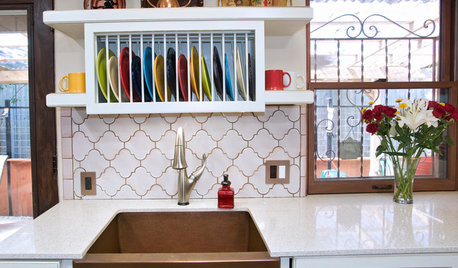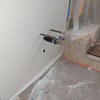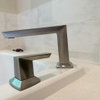Water Heater PRV Discharge Line into Crawl Space?
Tom Pultz
14 years ago
Featured Answer
Comments (7)
lazypup
14 years agoTom Pultz
14 years agoRelated Professionals
Livingston Handyman · North Druid Hills Kitchen & Bathroom Remodelers · East Tulare County Kitchen & Bathroom Remodelers · Minnetonka Mills Kitchen & Bathroom Remodelers · Bloomingdale Kitchen & Bathroom Remodelers · Bremerton Kitchen & Bathroom Remodelers · Oceanside Kitchen & Bathroom Remodelers · Olney Kitchen & Bathroom Remodelers · Patterson Kitchen & Bathroom Remodelers · Port Angeles Kitchen & Bathroom Remodelers · Rancho Cordova Kitchen & Bathroom Remodelers · Red Bank Kitchen & Bathroom Remodelers · Superior Kitchen & Bathroom Remodelers · Vashon Kitchen & Bathroom Remodelers · Weymouth Kitchen & Bathroom Remodelerslazypup
14 years agoscrew_code_com
13 years agobrickeyee
13 years agoTom Pultz
13 years ago
Related Stories

GREAT HOME PROJECTSHow to Add a Solar Water Heater
Lower energy bills without a major renovation by putting the sun to work heating your home’s water
Full Story
SAVING WATER11 Ways to Save Water at Home
Whether you live in a drought-stricken area or just want to help preserve a precious resource, here are things you can do to use less water
Full Story
GREAT HOME PROJECTSPower to the People: Outlets Right Where You Want Them
No more crawling and craning. With outlets in furniture, drawers and cabinets, access to power has never been easier
Full Story
HOUSEKEEPING5 Steps to Improve Your Heating System Now
Increase your heater's efficiency and safety for lower energy bills and greater peace of mind this winter
Full Story
KITCHEN DESIGNDish-Drying Racks That Don’t Hog Counter Space
Cleverly concealed in cabinets or mounted in or above the sink, these racks cut kitchen cleanup time without creating clutter
Full Story
EARTH DAYGrow a Beautiful Garden With Ecofriendly Greywater
Reducing home water waste means lower bills and a healthier planet. Here's how to set up a greywater home irrigation system that can help
Full Story
GREEN BUILDINGHow to Harvest Rainwater for Your Garden
Conserve a vital resource and save money by collecting stormwater for irrigation in a barrel or tank
Full Story
STORAGE10 Ways to Get More Storage Out of Your Space
Just when you think you can’t possibly fit all your stuff, these storage ideas come to the rescue
Full Story
REMODELING GUIDESHow to Dig Down for Extra Living Space
No room for a ground-level addition? See if a finished basement is a good idea for you
Full Story
BATHROOM DESIGNDreaming of a Spa Tub at Home? Read This Pro Advice First
Before you float away on visions of jets and bubbles and the steamiest water around, consider these very real spa tub issues
Full StoryMore Discussions








brickeyee